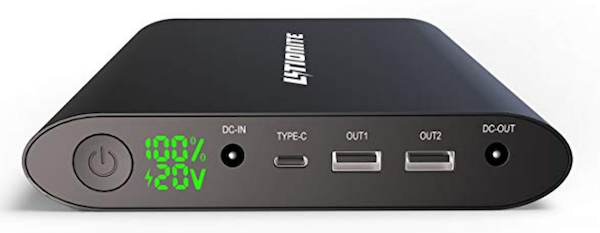My gosh Noah this is a wealth of information! This will sure help me out down the road when I get a hyperstar for my C9.25 Edge HD. Thanks again! Scott

Noah's Tips and Tricks for the EAA Noob
#26

Posted 20 January 2019 - 01:53 PM
#27

Posted 07 April 2019 - 12:40 PM
Phil, thank you for all your tips and tricks. Very useful information for EAA noobs like me :-)
#28

Posted 07 April 2019 - 03:53 PM
An update to this thread.
A later discovery (made by JamesCA) is that in Windows Remote Desktop it is possible to reduce or disable RemoteFX compression. This compression prevents more than 10Mbps to flow between two computers whether using wireless or cable. If RemoteFX compression is disabled, that enables 4k UHD screen data to be migrated without stutter or lag.
I didn't previously update this thread when it didn't get pinned and rapidly sank in the hierarchy, but as it has resurfaced, thought I should to complete it;
EDIT
Here are instructions from the relevant Microsoft paper....for Win 10 Professional/Server
RemoteFX data compression
Microsoft RemoteFX compression can be configured by using Group Policy under Computer Configuration > Administrative Templates > Windows Components > Remote Desktop Services > Remote Desktop Session Host > Remote Session Environment > Configure compression for RemoteFX data. Three values are possible:
1. Optimized to use less memory Consumes the least amount of memory per session but has the lowest compression ratio and therefore the highest bandwidth consumption.
2. Balances memory and network bandwidth Reduced bandwidth consumption while marginally increasing memory consumption (approximately 200 KB per session).
3. Optimized to use less network bandwidth Further reduces network bandwidth usage at a cost of approximately 2 MB per session. If you want to use this setting, you should assess the maximum number of sessions and test to that level with this setting before you place the server in production.
You can also choose to not use a RemoteFX compression algorithm. Choosing to not use a RemoteFX compression algorithm will use more network bandwidth, and it is only recommended if you are using a hardware device that is designed to optimize network traffic. Even if you choose not to use a RemoteFX compression algorithm, some graphics data will be compressed.
Edited by Noah4x4, 08 April 2019 - 03:27 AM.
#29

Posted 14 December 2019 - 12:09 PM
Noah, a little question if you don't mind: I grabbed a used i5 gen8 NUC for a few euros, and I'm considering a setup that would end up being quite similar to yours. The NUC will run CPWI, Sharpcap and perhaps some other planetarium such as CDC or Stellarium.
I could set it up for RDP (win10 pro), and can access it through a lengthy cat6a Ethernet cable with little to no lag (Wifi was a mess as you warned). Also disabled RDP compression following your advice. I foresee long nights spent by the fireplace while the C9 is freezing outside.
I already have that 12V PowerBank for the mount, camera and other gear (flats panel), and I'm currently looking for a battery that would run the NUC for a few hours. Unfortunately your 12/20V MaxOak model isn't available on the continent, but there are similar batteries though, such as this one, rated at 185Wh and that can output either 12, 16 or 20V (19.5V, to be exact) with a maximum output power of 90W. My NUC could probably make do with this battery, even at full throttle while stacking 20MPix frames. In your experience, was your NUC stable enough with the MaxOak, or did you end up buying the intermediate 19V regulator?
#30

Posted 14 December 2019 - 07:49 PM
Noah, a little question if you don't mind: I grabbed a used i5 gen8 NUC for a few euros, and I'm considering a setup that would end up being quite similar to yours. The NUC will run CPWI, Sharpcap and perhaps some other planetarium such as CDC or Stellarium.
I could set it up for RDP (win10 pro), and can access it through a lengthy cat6a Ethernet cable with little to no lag (Wifi was a mess as you warned). Also disabled RDP compression following your advice. I foresee long nights spent by the fireplace while the C9 is freezing outside.
I already have that 12V PowerBank for the mount, camera and other gear (flats panel), and I'm currently looking for a battery that would run the NUC for a few hours. Unfortunately your 12/20V MaxOak model isn't available on the continent, but there are similar batteries though, such as this one, rated at 185Wh and that can output either 12, 16 or 20V (19.5V, to be exact) with a maximum output power of 90W. My NUC could probably make do with this battery, even at full throttle while stacking 20MPix frames. In your experience, was your NUC stable enough with the MaxOak, or did you end up buying the intermediate 19V regulator?
The Intel NUC is (officially by Intel) rated at 12v to 19v + or - 10%. My experience is that cheap Chinese "12v" power units typically have an output of 11.6v that soon depletes to a level below which the Intel NUC will choke. High quality (But expensive) 12v units like a Tracer have a much more successful discharge curve. I did find a 16v power unit, but struggled with that because it was light on amps.
The MaxOak K2 "50,000 mAh" has an output rated at 20v. Hence, I was nervous about "19v + or - 10%". However, I bought one and discovered its true output to be 19.3v and it's discharge curve bottoms at about 18v. Although you have to take its "50,000 mAH" with a pinch of salt, it will comfortably output 2.5 Amps for at least 8 hours. My findings have since been mirrored by reports from other CN'ers that have bought the MaxOak K2. Given its price of circa £120 it is a bargain compared to a 12v Tracer 22Ah (£200+) and I have been reliable using one for two years. I know of many CN'ers also using the MaxOak K2 at "20v". But to be absolutely confident if paranoid, you could use its alternative 12v output with an inverter to step up to 19v. But (IMHO) its regular "20v" (19.3v in truth) will work perfectly with a NUC.
#31

Posted 15 December 2019 - 03:05 AM





















